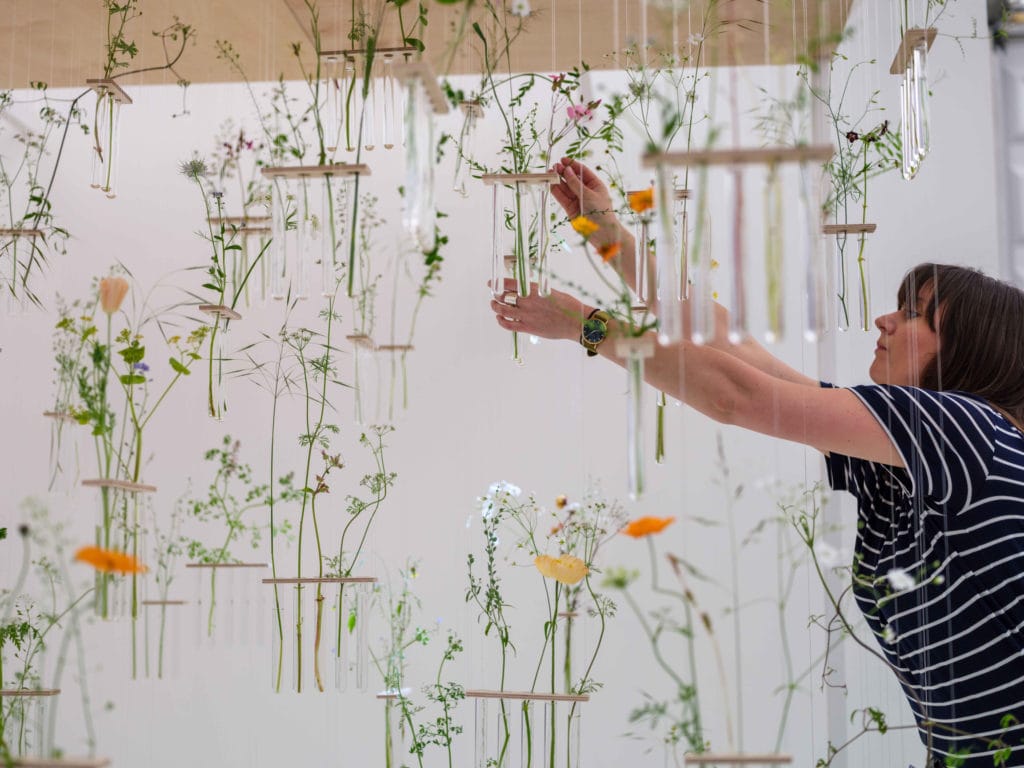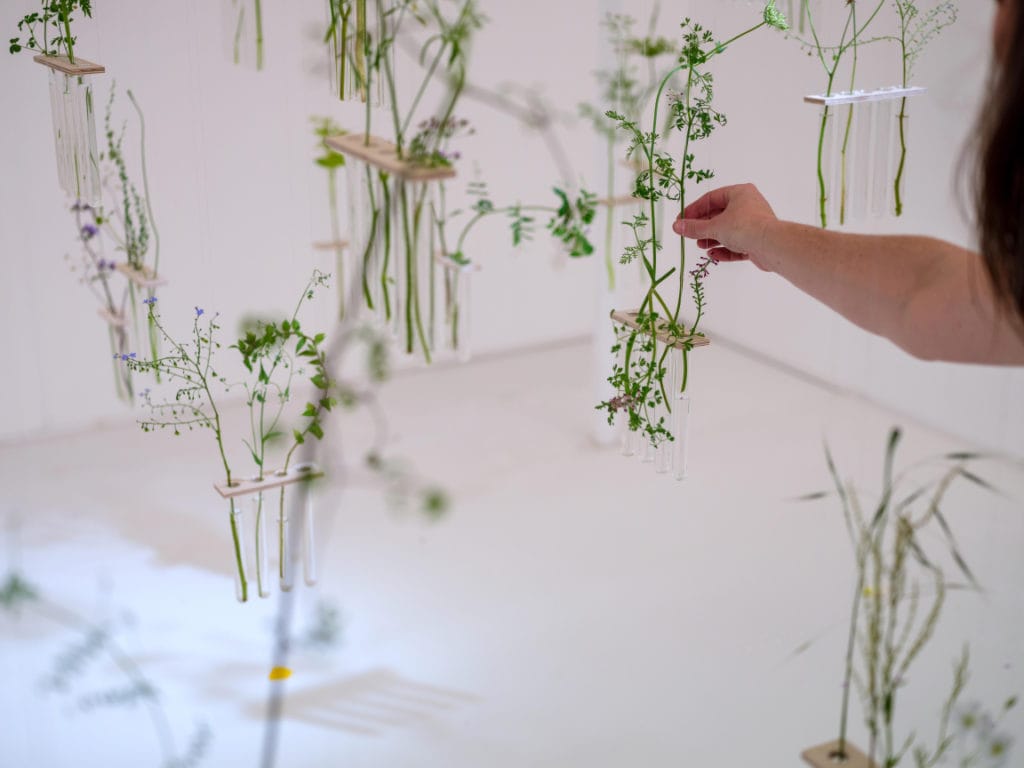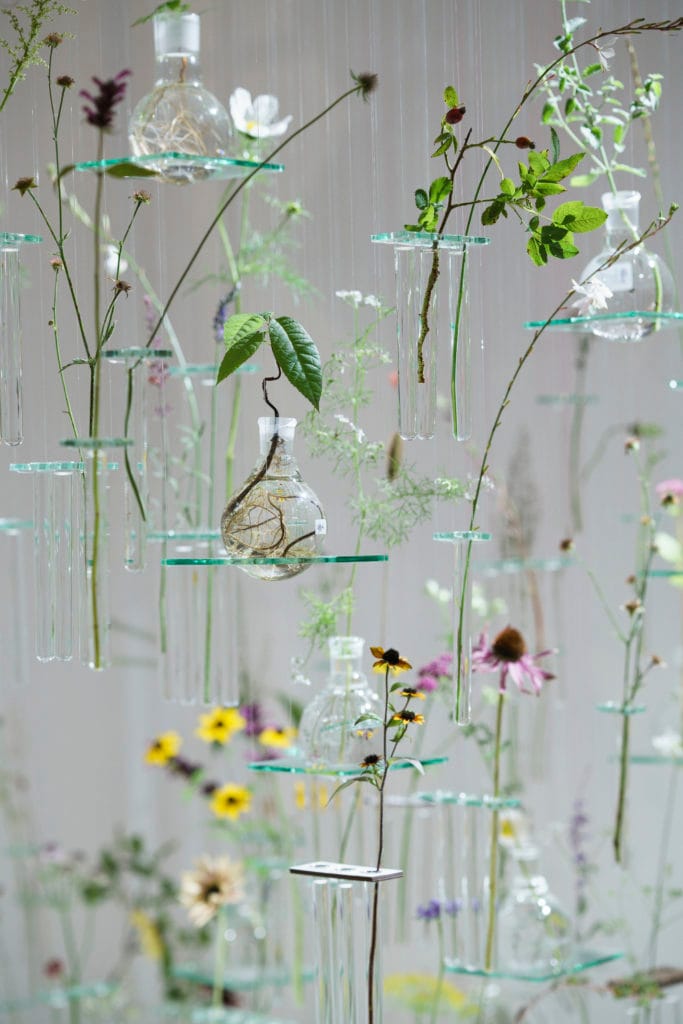The Art House Presents Emotional Geographies – A Living, Multisensory Botanical Exhibition by Charlotte Smithson Exploring Memory, Nature and Community
Download the press release here
Download the images below
The Art House in Wakefield is proud to announce Emotional Geographies, a powerful new exhibition by artist Charlotte Smithson. Rooted in personal history and shaped by community collaboration, this immersive installation invites audiences to explore the emotional bonds between people, place, and nature through a living, evolving sculptural installation that takes over the gallery space.
Drawing deep inspiration from her grandfather, Yorkshire-born art teacher Peter Hawkin, Emotional Geographies transforms The Art House gallery into a multisensory botanical environment. In 1959, her grandfather planted a series of flowering cherry and almond trees along his street, Belgravia Road in Wakefield – trees which still bloom today as a living symbol of care, creativity and connection. Smithson revisits this legacy by working with local communities to co-create a large-scale and suspended sculptural installation filled with tree saplings and specimens, many nurtured by residents across Wakefield.
The exhibition invites conversations between past and present, offering space for reflection and shared memory. Original artwork from Hawkin provides an intimate backdrop to the contemporary installation, highlighting the emotional resonance of place and the enduring impact of small acts.
Guided by Smithson’s artistic manifesto An Entangled Co-conspiracy, the exhibition reimagines sculpture as a living, growing form. Throughout the exhibition, community groups and volunteers will help nurture the installation, deepening the public’s connection to the work.
Alongside the exhibition, a vibrant programme of free public creative workshops, such as mindful mark making, restorative yoga and Belgravia Road photo walks, as well as Talking Trees presentations by Woodlands Trust expert Roger Parkinson.
The engagement programme also invites Wakefield residents to join The Art House’s Studio of Sanctuary community to engage in nature-based creativity, building Urban Gardens around the building as a legacy to the exhibition. Further, saplings and natural elements featured in the installation will be available to communities and local residents to be planted in gardens and public spaces across the city, supporting Wakefield Council’s tree-planting and climate goals. This act of regeneration ensures the project leaves new roots for future generations to grow from.
Smithson, who has a lifelong personal connection to Wakefield, describes the project as an inspiring collaboration to be part of. “By bringing an infant woodland into the gallery we are inviting people to enjoy the beautiful and calming qualities of time spent amongst trees. There are specimens in all shapes and sizes, each with its own unique story. It’s incredible to think of the trees all being rehomed after the exhibition and going on to live long, healthy lives across the region in people’s gardens and in public spaces. I think my grandpa would be very touched if he knew the trees he planted here over 60 years ago had inspired this legacy.”
Emotional Geographies is supported by Wakefield Council’s Culture Grants: Connecting Communities, and represents a major expansion of The Art House’s inclusive and socially-engaged programming. It builds on our commitment to opening up contemporary art to those who feel excluded from traditional spaces and redefines what sculpture and creative engagement can be.

Notes to Editors
Images and interviews by arrangement
Press Contact: Damon Jackson-Waldock / damon@the-arthouse.org.uk / 01924 31200
About The Artist
Charlotte Smithson is an artist whose work focuses on our relationships with nature and explores her ideas through site-specific installation, mindfulness and community collaboration. She brings forward an innovative approach to contemporary art, experimenting with the interplay between materials, sustainability and collective action in placemaking.
Smithson’s work is underpinned by research that demonstrates how sensory, meaningful creative experiences encourage sustainable behaviours and conservation efforts, and incorporates science backed “pathways” to nature.
Her living artworks consider our intricate connections with the rest of nature and how we achieve health for ourselves and the world around us, when those things are aligned. Her projects foster deeper, emotional connections to wilderness, inspiring people to embrace environmental stewardship and responsibility driven by love and care.



